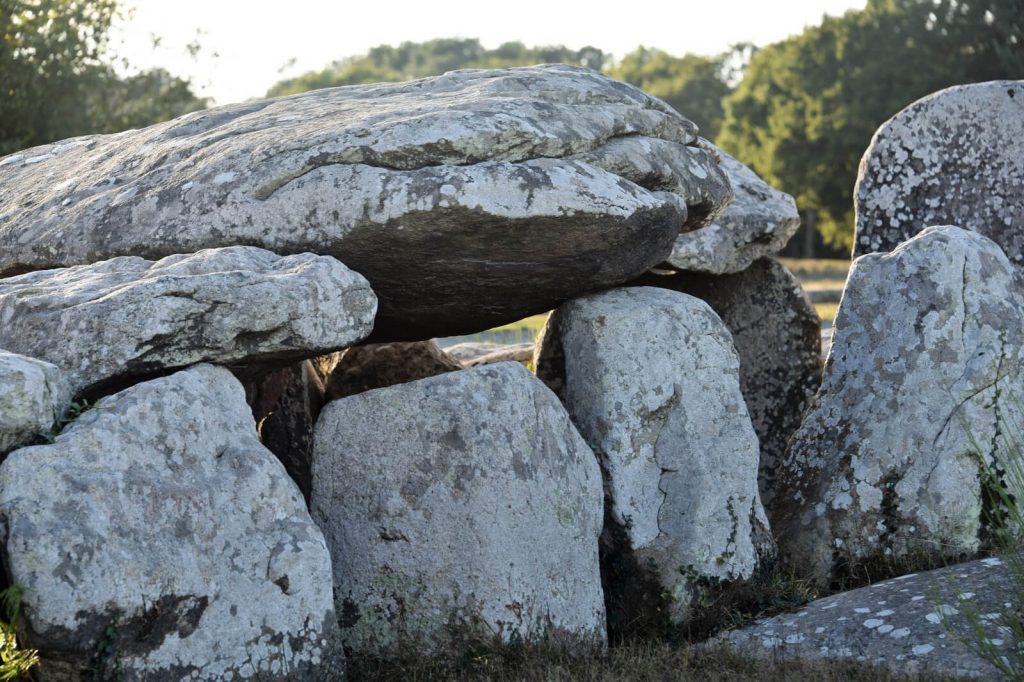
The westernmost province of France is a land of Arthurian myths and legends, of deep-rooted traditions, of ancient burial chambers and stone circles.
The Stones at Carnac
Clusters of standing stones can be found all over this corner of France, but the most dramatic are the megalithic alignments at Carnac, on the Gulf of Morbihan.
Perched on the cliffs of Brittany, facing the open Atlantic, lies Carnac. At its heart is a vast landscape made up of menhirs and dolmens: Neolithic relics that date back more than five thousand years.
The more than 3,000 stones here constitute one of the most extensive and important archaeological sites globally.
Location of the Carnac Stones
About a mile outside the small town are ranks and ranks of tall standing stones, or menhirs, as they are officially known. They almost look as if they have just appeared there overnight. They march across farmers’ fields, past small stone cottages, across the main road, and through several area campgrounds.
There are several different areas of stones spread out over several square miles around Carnac and the surrounding countryside.
The stones are hewn from the local granite. Some of them are as much as 12 feet high and weigh up to 20 tons. Today, the Carnac stones appear with rough edges. However, there is evidence that they were skillfully cut with perfectly straight lines and angles.
One of the enormous stones has been mysteriously and dramatically split open – by a thunderbolt, as locals like to tell.
One of the most extensive and dramatic groupings of the stones is known as the Menec alignment. This alignment, which lies alongside the narrow winding road from Carnac to Auray, near the village of Kerlesken, is perhaps the most photographed in the area.
The observation deck in the visitor center offers one of the best views of these stones. The center is also an excellent place to see a large-scale model depicting every stone and stone circle. Visitors can also buy souvenirs in the form of miniature menhir paperweights.
Other Megalithic Stone Sites in the Area
Apart from the primary grouping of the Carnac stones, there are also many ancient burial chambers, or dolmen, hidden away in the region. Many of these alignments are on private property or so overgrown that only the locals know exactly where they are.
Some of these are dramatic in their construction, such as the dolmen near the tiny village of Crucno. This site consists of 9 standing stones supporting a huge flat stone of over 40 tons.

In the 19th century, the monument must have looked even more impressive as it also boasted an ‘avenue’ of huge upright stones.
However, unfortunately, these stones have been used by the local people over the years to construct their houses.
One of the most enchanting places, especially for children, is a line of moss-covered stones that meanders through the forest at Petit Menec, between Auray and La Trinite.
Some of these stones were purloined and used to construct a nearby lighthouse in the 19th century. However, local outcry prevented all the stones from being removed. It does not take too much imagination to conjure up visions of fairies cavorting around the stones.
Legends of the Stones – History of the Stones
Like Stonehenge and many other stone sites around the world, there are plenty of theories about their history and construction, ranging from the work of extraterrestrials to a huge marked burial plot.
Although the stones do resemble headstones, there is no indication that this was their purpose.
Local legend has it that the stones are legions of Roman soldiers turned into stone or the remains of the legendary lost civilization of Atlantis.
In all probability, the stones were an ancient observatory for monitoring the movements of the stars and sun.
Modern dating techniques have established that most of the megalithic stones were built over a period of time by a Neolithic culture that lived and farmed this corner of France between 4,000 and 2,000 BC.
Whatever the reason for their construction, the enigmatic stones of Carnac stand guard over this mysterious corner of France today, as they have done for centuries.
